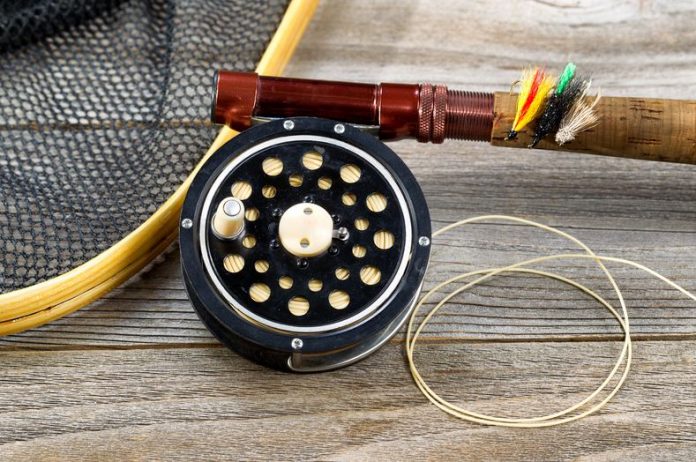Choosing the right fly line for your fishing rod is critical for success. Fly rods are rated for a given line – or more usually two lines.
Normally the line rating is written somewhere on the butt of the rod, usually as two numbers separated by a / mark. E.g. 3/4 or 7/8.
These two figures represent the manufacturer’s suggested fly line rating. The first figure is for a Double Taper line and the second for a Weight Forward line.
For those who do not know, a double taper line is one where the thickest part of the line is in the middle of its length and the line then tapers away equally towards the two ends.
A weight forward line has a different profile. As the name suggests most the weight of the line, the thickest part, is concentrated at the front end. Behind this section is a long thin section of equal diameter line known as the running line.
The difference between these two profiles reflects the way the lines are used.
A double taper line is used when shorter casts are required, usually on rivers and streams. In these conditions you are often casting to fish high in the water or rising.
Because of the slower taper on a double taper line it is easier to cast more delicately and avoid scaring the fish.
One other great advantage of the double taper line is that the taper is the same whichever end you use. So, if you damage one end of the line you can turn it round and use the other end.
Fortunately the manufacturers do not charge extra for this – yet!
Weight forward lines are better for fishing the wider rivers and lakes where longer casting may be required. Because the weight of the line is concentrated in the front end the rod loads quicker.
This makes it easier to build up line speed and momentum which helps to shoot line on the delivery, making for longer casts. This type of line is also better able to cast into or across awkward winds.
The main disadvantage of these types of line is that because more of the weight is concentrated in the front end, there is a much steeper taper to the line end.
So, these lines tend to land more heavily on the water. This makes delicate presentation more difficult.
The other disadvantage of weight forward lines are that there is a definite right and a wrong way to put the line on the reel.
The thin running line has to go on first so that the heavier forward end comes off the reel first.
Get the line the wrong way round and you will find it almost impossible to cast.
While it is always best for beginners to stay with the manufacturers recommendation for line rating, modern rods are far more adaptable at handling different lines than older rods.
Apart from anything else the more experienced fly fisher develops a feel for when the rod is correctly loaded and can adjust his casting to suit heavier or lighter lines than recommended.
Hopefully, these guidelines help you to understand and choose the right fly line for your rod and your fishing.

